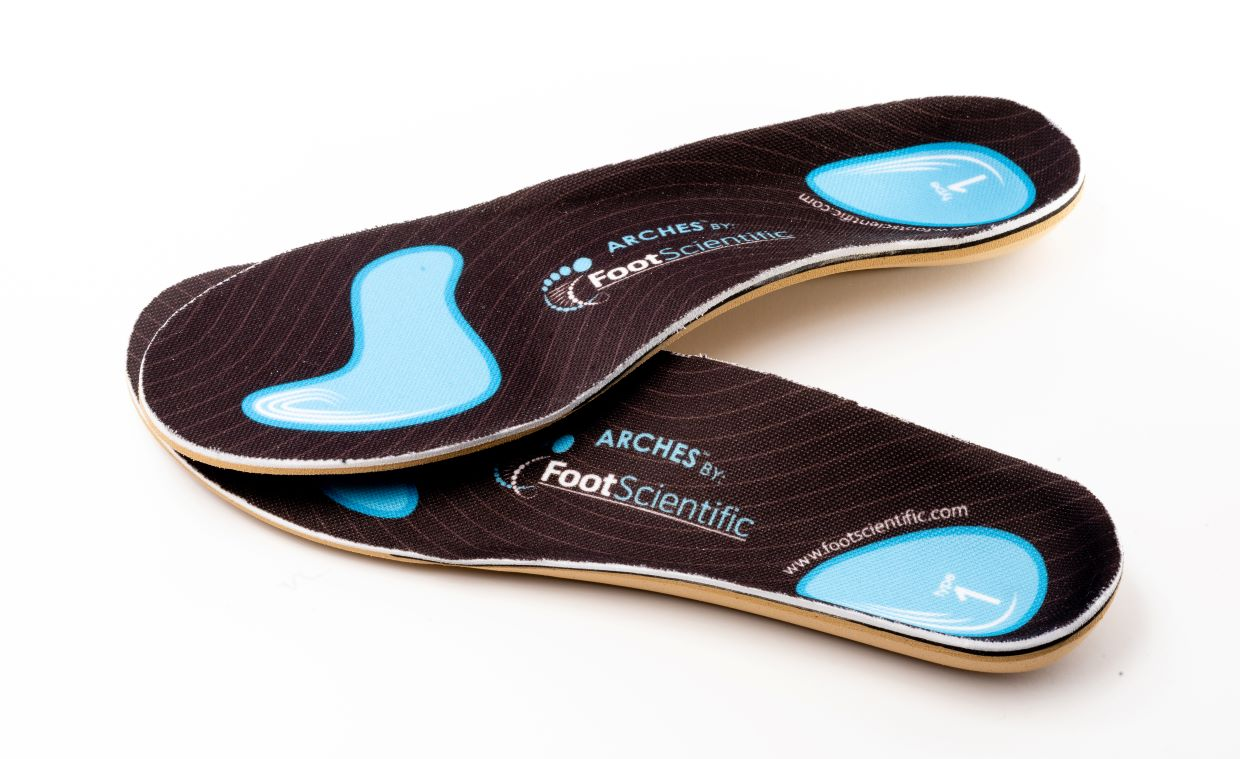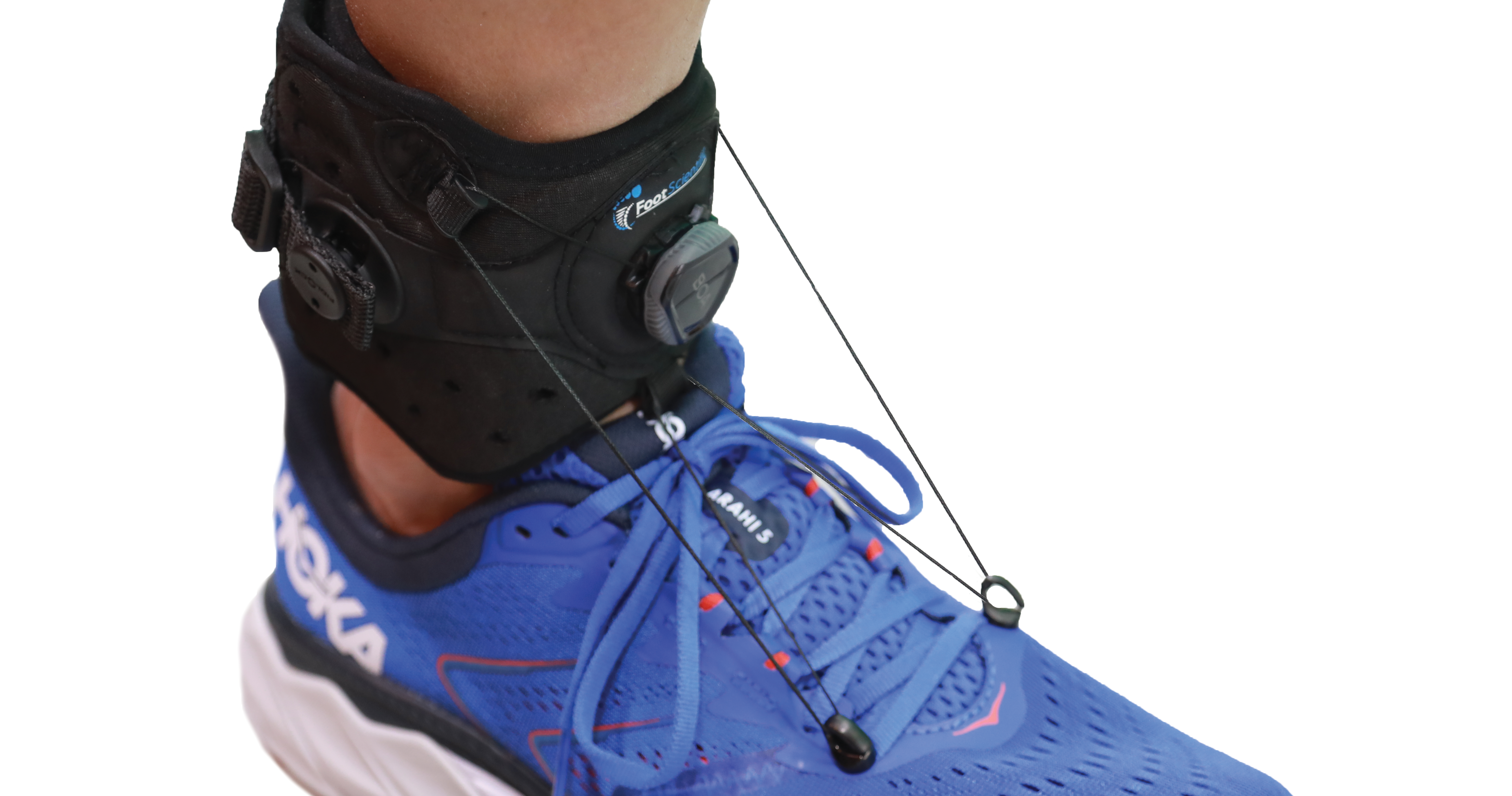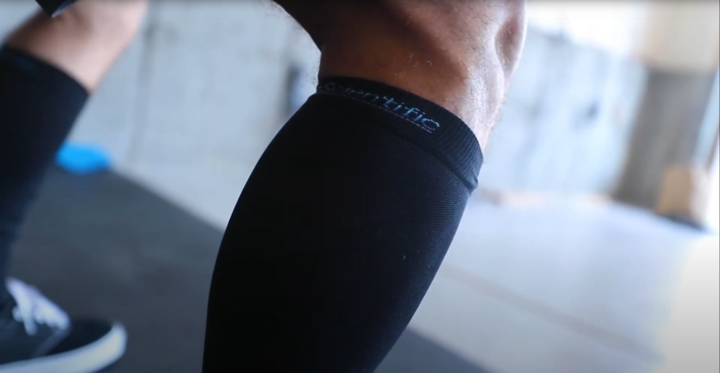FREE SHIPPING on orders over $99
For the best fit, if you’re between sizes, we recommend sizing up.
HSA Eligible - This item is now eligible to accept HSA payment!
The Arches® line of Orthotics by FootScientific balances correction, comfort, and performance for both the athlete and the lay user. The materials surpass the comfort of custom footbeds and enhance proper correction as the foot falls into the corrective base of the orthotic. The primary material, a cork amalgam, holds its comfortable shape over time.
The patented structure of the Arches® Orthotics Type 3 allows the over-flexed big toe to drop into a comfortable position while tilting the heel out of its abnormal position, neutralizing the heel. This structural shift creates immediate relief while standing and causes a better interplay of the foot’s structure while walking and running to create more stability and efficiency.
The Type 3 Orthotic:
- Neutralizes the foot.
- Takes pressure off key tendons.
- Increases power through better use of large muscle groups.
- Will reduce many common injuries found in those with high arches: metatarsalgia pain, pain on the outside of the ankle, pain on the lateral part of the foot, pain in the heel, such as plantar fasciitis, and problems with the heel and Achilles. Outward ankle rolling and sprains common to the high arched foot are also reduced.
What's Your Foot Type?
Type 1: Pronating, Overpronating, Flat Foot, Fallen Arch
Type 2: Neutral Arch
Type 2 is for additional arch support, weight distribution off pressure points, and foot stabilization for a more responsive and comfortable foot.
Type 3: Supination, High Arch, High Rigid Arch, Cavovarus Foot , Inner Knee arthritis
- Superior to Custom Orthotics: Your foot falls comfortably into Arches® patented corrective shapes.
- Keeping it Honest and Simple: Arches® understands that choosing an orthotic based on your foot-type is much more important than choosing an orthotic based on activities engaged.
- Designed for Power: The Arches® corrected foot transfers power to large muscle groups and away from injury and pain-vulnerable small muscles and tendons like the plantar fascia.
- Correction AND comfort: Not a gushy gel that feels good for 30 seconds, neither a rigid corrective base that hurts for 30 months. Our cork amalgam keeps its corrective shape while conforming comfortably and flexibly to your foot.
Before & After
Construction
Each pair of orthotics is designed with 4 layers.
- Form Correcting Molded Cork: allows for shock absorption, maintains the alignment, and maintains the correction of the orthotic
- Heel Stabilizing Padded Foam: stabilizes the heel, providing comfort and support
- Comfort Layer of EVA Foam: allows for persistent shock absorption and comfort of the wearer
- Stay Dry B.K. Mesh: works to control perspiration, odor control, and transitional cushioning
How to install your Arches Orthotics
Expert Insights from Dr. Rob Faux
Board-Certified Orthopedic Surgeon specializing in corrective foot biomechanics
The biomechanics are completely opposite. If you have high arches and use flat-foot orthotics (or vice versa), you're not just wasting money—you're potentially making the problem worse.
Pronation (flat feet), neutral, and supination (high arch) foot types each require specific corrective geometries. What works for one can harm another.
Understanding High Arch (Cavovarus) Biomechanics:
High-arched feet distribute weight primarily on your heel and ball of foot, with minimal midfoot contact. This creates several problems:
- Lateral ankle instability: Your foot naturally rolls outward (supination), making ankle sprains common
- Concentrated pressure points: Without midfoot shock absorption, all your body weight hammers your heel and forefoot with every step
- Rigid foot structure: High arches often mean stiff feet that don't absorb shock naturally
- Peroneal tendon stress: The outward roll creates excessive strain on lateral ankle structures
What High Arches Need (That Flat Feet DON'T):
1. Lateral (Outside) Heel Wedging
A 3° wedge on the outside edge of the heel counters excessive supination, reducing ankle roll and improving stability. This is the opposite of flat-foot correction, which uses medial (inside) wedging.
2. Extra Cushioning, Not Rigid Arch Support
High arches are already too rigid—adding more arch support makes the problem worse. You need shock absorption instead. The goal is distributing concentrated pressure, not creating more arch height.
3. First Metatarsal Relief
High arches create excessive pressure under the big toe joint (first metatarsal head). Strategic relief in this area prevents painful calluses and metatarsalgia.
Why Flat-Foot Orthotics Fail for High Arches:
Flat-foot orthotics push UP on the arch with medial (inside) posting. For high arches, this creates painful pressure on an area that's already elevated and rigid. It's like putting a rock under an already-high bridge.
The result: Increased pain, more pressure points, worsening of existing problems.
Common High Arch Symptoms That Need Type 3:
- Recurrent ankle sprains (chronic instability)
- Lateral (outside) ankle pain
- Peroneal tendon pathology
- Ball of foot pain (metatarsalgia) with high arch
- Achilles tendonitis from poor mechanics
- Calluses under ball of foot
The Arches Type 3 Difference:
Type 3 features:
- 3° lateral heel posting to prevent ankle supination
- Strategic cushioning zones for shock absorption
- First metatarsal relief to reduce forefoot pressure
- Cork amalgam base for durability without excessive rigidity
This addresses the biomechanical needs of cavovarus feet without forcing unnecessary correction.
Research Backing:
Studies show high arches with lateral support demonstrate 60% reduction in ankle sprain recurrence. Proper foot-type matching reduces treatment failure rates by 50%.
Compare With Other Foot Types:
- Type 1 - For flat feet/pronation (medial posting)
- Type 2 - For neutral arches (moderate support)
- Type 3 - For high arches/supination (lateral posting + cushioning)
Dr. Faux's guidance: "Cavovarus feet require a completely different approach than planovalgus. The correction isn't just different—it's opposite. Using the wrong type doesn't just fail to help; it actively creates new problems."
If someone's selling you orthotics without mentioning replacement schedules, they're either uninformed or being dishonest.
Even the best orthotics wear out. Understanding lifespan helps you budget correctly and know when correction is being lost.
Realistic Lifespan Expectations:
- Cork-based corrective orthotics (like Arches): 12-18 months with daily use
- Foam drugstore insoles: 4-8 weeks before significant compression
- Custom orthotics: 18-24 months (but cost 5-10x more)
Why Replacement Matters:
When orthotics wear out, they stop correcting and can actually create NEW problems:
- Compressed cork/foam = lost correction = your foot pain returns
- Worn top layer = uneven pressure distribution = new hot spots
- Degraded materials = reduced shock absorption = increased impact stress
Signs It's Time to Replace:
- Visible compression (orthotic looks flatter than when new)
- Heel pain or arch pain returning
- Top fabric layer peeling or wearing through
- You can compress the orthotic easily with thumb pressure
- Uneven wear patterns (more compression on one side)
Cost Perspective:
Arches Type 3 at 18-month lifespan:
- $72 ÷ 18 months = $4/month
- Actually LESS than replacing $20 drugstore insoles every 6 weeks
Dr. Faux's Pro Tip: "I tell patients to have 2-3 pairs and rotate them between shoes. This extends the life of each pair and ensures consistent correction. Replace every 12-18 months or as needed based on use."
Extending Orthotic Life:
- Rotate between pairs if you wear orthotics daily
- Air them out overnight (don't leave in hot car)
- Spot clean instead of soaking (water degrades adhesives)
- Use in appropriate shoes (avoid flip-flops, minimal sandals)
Material Durability:
Cork amalgam advantages:
- Maintains 85-90% of original thickness after 12 months
- Holds corrective shape significantly longer than foam
- Especially important for heavier individuals (200+ lbs)
- Self-customizes without losing structural integrity
EVA foam comparison:
- Loses 40-60% thickness within 6-8 weeks
- Corrective properties degrade rapidly
- Requires frequent replacement
The Bottom Line:
Cork-based orthotics like Arches Type 3 provide better value over time. Yes, they cost more upfront than drugstore insoles, but they last 3-4x longer and actually maintain their corrective properties throughout their lifespan.
Research backing: Clinical studies show cork-based orthotics maintain corrective properties 3-4x longer than foam-only designs, resulting in better long-term outcomes and lower cost-per-wear.




